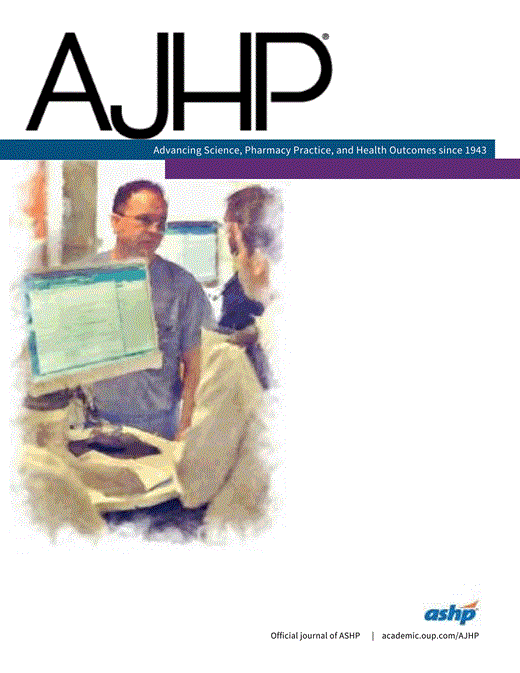-
Views
-
Cite
Cite
Philip E. Johnston, Daniel J. France, Daniel W. Byrne, Harvey J. Murff, Byron Lee, Renee A. Stiles, Theodore Speroff, Assessment of adverse drug events among patients in a tertiary care medical center, American Journal of Health-System Pharmacy, Volume 63, Issue 22, 15 November 2006, Pages 2218–2227, https://doi.org/10.2146/ajhp050405
Close - Share Icon Share
Abstract
Purpose. Specific patient and clinical characteristics associated with an increased risk of sustaining an adverse event (AE) were identified.
Methods. AE reports for patients in a 658-bed tertiary care medical center between January 1, 2000, and June 30, 2002, were analyzed. The data collected from each report included medical record number, patient sex, patient age, clinical service, date of occurrence, diagnoses, type of error, suspected medication, and severity of the AE. A three-stage logistic regression model with high-risk indicators was used to evaluate key indicators of the most vulnerable patient populations.
Results. The number of control patients and those with AEs totaled 60,206. This population was then randomly split into two equal groups of patients: the training data set (n = 30,103) and the validation data set (n = 30,103). AEs occurred in a higher percentage of patients who were age <1 year, 1–15, 47–59, and ≥60 years than in other groups. A higher percentage of AEs were reported in men than women, but the groups were not significantly different when comparing those with an AE and those without an AE. Asian Indian patients demonstrated a high rate of AEs, but this may be a statistical artifact, reflecting their very small percentage in the study. Evaluation of admission sources revealed that doctors’ offices, clinic referrals, and local hospital transfers accounted for higher rates of AEs than other sources.
Conclusion. Certain age groups, diagnoses, admission sources, types of insurance, and the use of specific medications or medication classes were associated with increased AE rates at a tertiary care medical center.






Comments